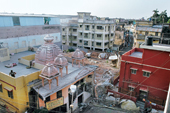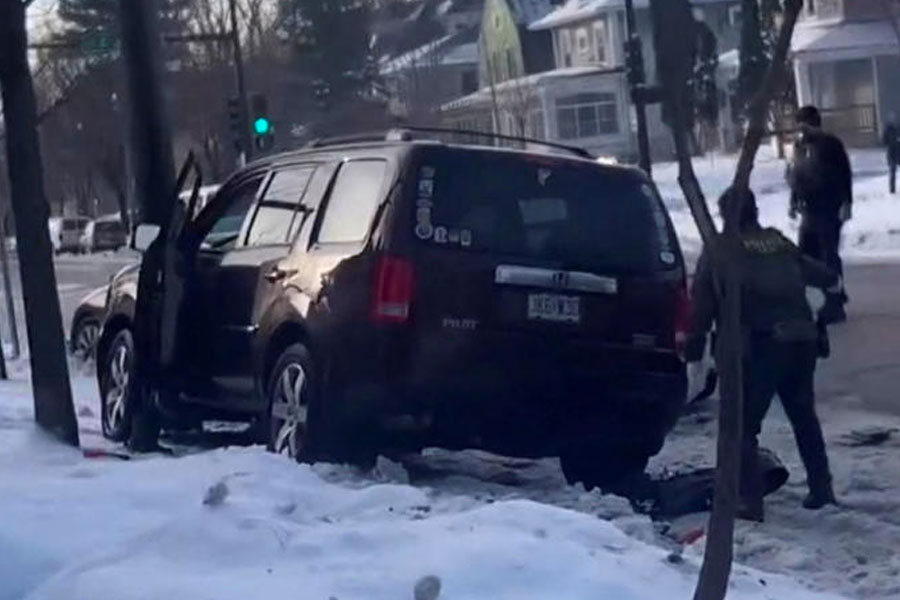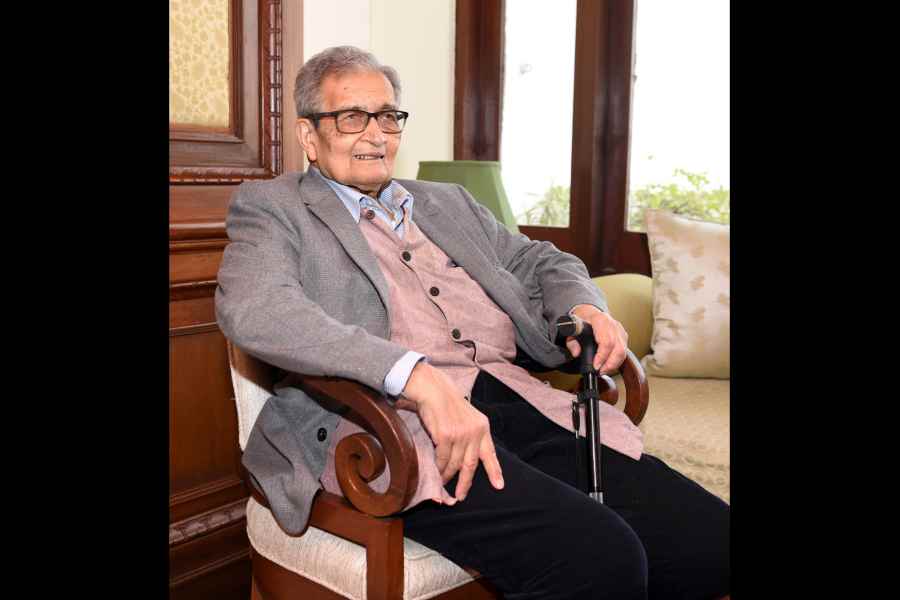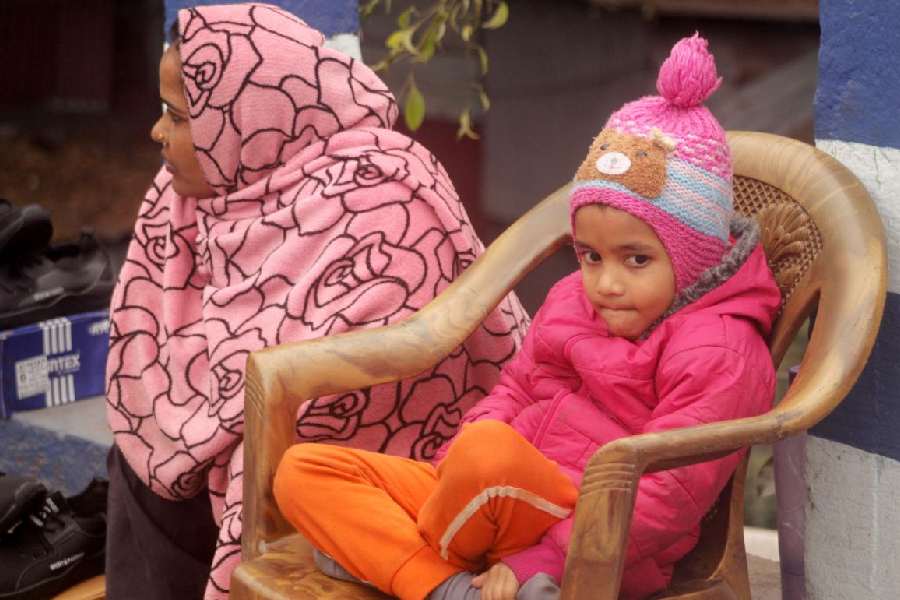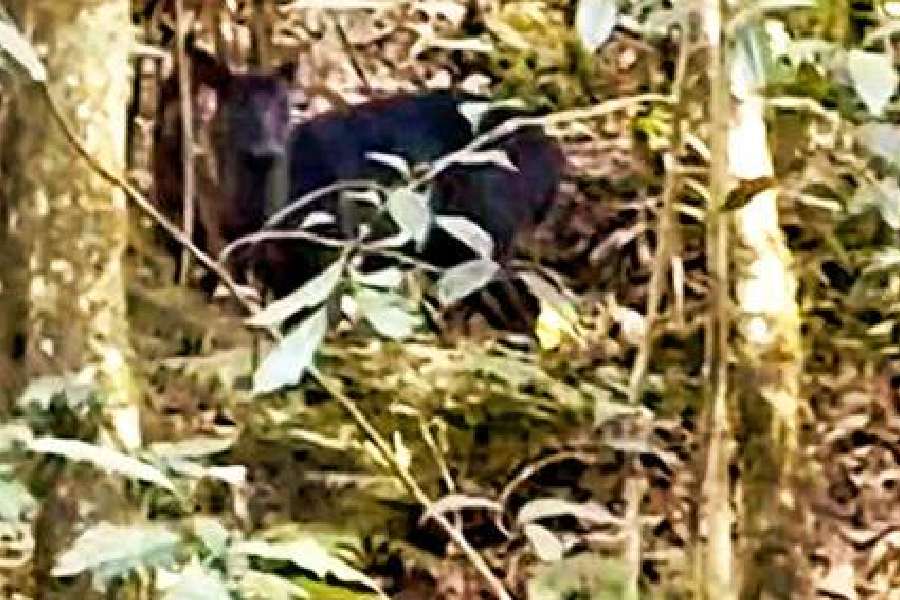 |
| The vacant lot where 171 Romesh Dutt Street was located. RC Dutt’s house once stood next to it. (Biswarup Dutta) |
In Ray Bradbury’s dystopian novel, Fahrenheit 451, about future America, reading is outlawed and “firemen” burn books “for the good of humanity”. In Calcutta we erase phases of our cultural history from the face of the city. This has happened in two spots in north Calcutta close to Chittaranjan Avenue, and both are associated with some of the greatest literary figures of Bengal. The first is the home of Kaliprasanna Singha (1840-70) in Baranasi Ghosh Street and the second is the seat of the Dutt family in Rambagan close to Beadon Street.
In the late 1960s, Desmond Doig had described how Kaliprasanna Singha’s house was dismantled and his sketch showed the remnants of arches amidst a pile of bricks. Now it has turned into a vacant lot where a developer is busy developing a school, people of the neighbourhood say. I was pleasantly surprised when a tea-stall owner recognised the name of the man who had written Hutom Pyanchar Naksha and translated Mahabharat.
On its right is a row of tiny but well-maintained rooms, and if one isn’t careful enough, one may miss the entrance leading to a shrine with a row of columns in front. It is the Singha family shrine of Radha Krishna. So much for Kaliprasanna Singha.
 |
The easiest way to identify Romesh Dutt Street, a few yards away from Beadon Street, are the giant images, decorations for pandals and election symbols strewn all over the thoroughfare. This is Dompara, adjacent to Rupagachhi, the infamous red-light district.
The house of the Dutt family of Rambagan has turned into open space. In front of it is an ugly temple, and as if growing out of it is the health unit of ward 26. It is hard to believe that this was the incubator of Indo-Anglian literature and that this was the home of the poetic sisters, Toru and Aru Dutt.
When I had visited Rambagan 10 years ago, the house of Romesh Chunder Dutt, the second Bengali to become an ICS and a litterateur, had already been demolished. Now it is a block of flats (7A and 7B Raja Gurudas Street, originally just 7 Raja Gurudas Street).
Bimal Dutt, 88, belonging to the Hindu branch of the Dutt family, says about a month ago, the house (171 Romesh Dutt Street, formerly Maniktala Street) that had been taken over by Karmibrinda, was demolished. The building belonged to Rosomoy Dutt, son of Nilmoni, progenitor of the family.
Ten years ago, I had met Girin Dutt, Bimal’s uncle, who was 83 then. He recalled how his father and Rajani Palme Dutt, the Communist leader, were cousins.
During the great famine of 1771, Nilmoni Dutt left his home at Aajpur in Burdwan and settled down in Rambagan. He lived at 10 Romesh Dutt Street and was a banyan with the East India Company but went into debt. His three sons were Rosomoy, Harish and Pitambar. Rosomoy was the first Indian puisne judge and first Indian secretary of Hindu College. The house at 171 Romesh Dutt Street which he constructed was called “Judge’s house.”
His five sons were Kissen, Kylash, Hur, Govin and Greece. Apart from refusing to go by the book in linguistic matters, some branches of the family were proselytes. Kissen wanted to be baptised on his death bed.
 |
So his brother Greece, who remained a Hindu to the last like Hur, obliged by reading out the relevant chapters from the good Book. Kylash’s son was Omesh Chunder, who in 1870 brought out the first anthology of English poetry written by Indians titled Dutt Family Album. Omesh became a Christian during the Mutiny.
Govin and his three children, who died very young, were also converts. The boy was Abju, who died at 14, and the two girls were Aru and Toru. Govin took his two daughters to France. Toru could write in English, French and later Sanskrit with equal facility. Toru’s novels Bianca or The Young Spanish Maiden and Le Journal de Mademoiselle d’Avers in French were highly regarded, and her early death added to her romantic appeal.
Pitambar had two sons Issen and Shoshee and the former fathered Romesh. Shoshee and his uncle Kylash (editor of Hindu Pioneer) were prolific writers. Kalyan Chunder Dutt, former principal of Scottish Church College and who is a direct descendant of Omesh, lived at 171 Romesh Dutt Street till 1968, by which time most family members had moved elsewhere and some had died. “The house was built circa 1790. It had 50 rooms and was built on 16.5 cottah at a cost of Rs 80,000,” says Kalyan Dutt. A photograph taken in 1919 by his father, Sushil Dutt, proves this.
Kanak De, 72, a long-time neighbour of the Dutts, says a Christian branch of the family was ostracised and was compelled to employ the low-caste Doms. They occupied some groundfloor rooms and multiplied.
“They are natural artists. About 25 years ago, a man named Jiban Krishna Ghoshal, when the area was under Jorasanko police station, organised them to form Karmi Brinda. He was an influential man and was behind the appropriation of 171 Romesh Dutt Street. Ramakrishna Mission built flats for these people but they still work on the road. After Ghoshal’s death, Karmi Brinda is languishing,” he added.
Of late, house No. 10 Romesh Dutt Street, that once belonged to Pratul Dutt, a Christian, has been acquired by a New Zealander, who employs the women from Rupagachhi in his manufacturing unit. This businessman has also acquired another house that once belonged to Barun Chunder Dutt.
A largish house — 12 A, B and C Romesh Dutt Street — behind Liberty cinema that once used to be the home of Toru now belongs to the Basu family. The original staircase leading up to what was once the library has survived.

